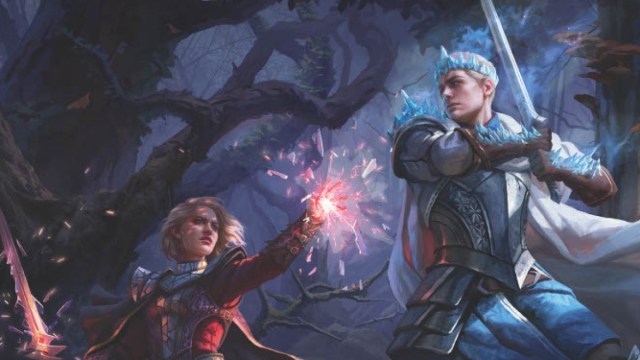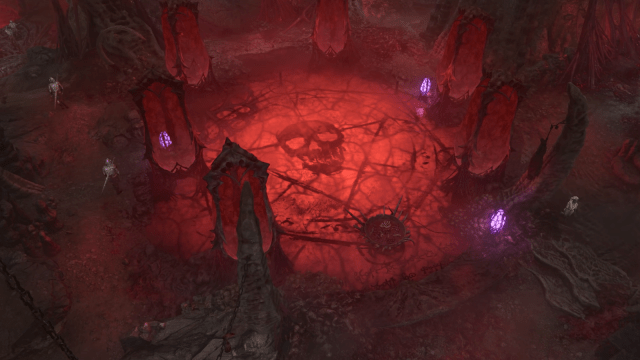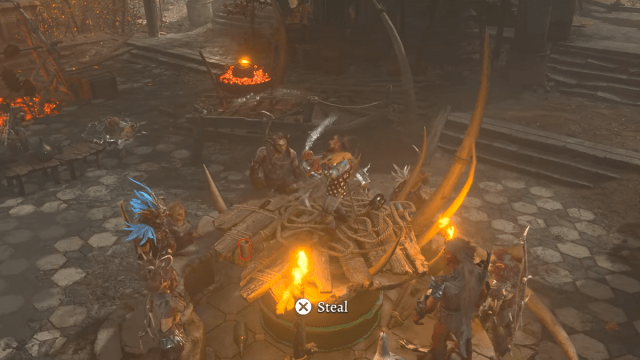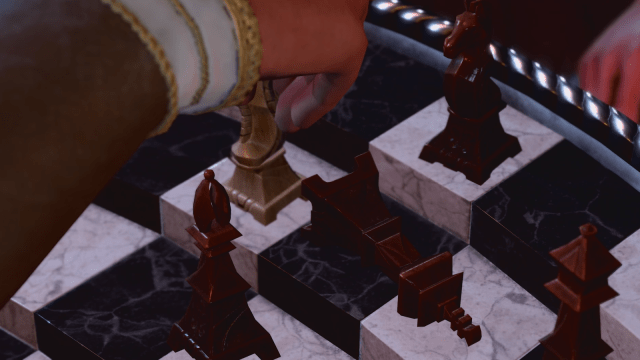The Bard is often considered one of the weaker spellcasters in Dungeons & Dragons 5th Edition, which is a mantle often undeserved. Their combination of Bardic Inspiration and how their Colleges can change their playstyle makes them fit well as a support class in any party. But, like in real-life colleges, competition is rife. Let’s talk about the best Bard Colleges available to players in 5E.
Colleges are the Bard’s subclass feature, unlocked at level three for all Bard builds. Most follow a fairly similar structure: Option to improve Bardic Inspiration at level three, option to improve damage at level six, and strange utility option at level 14.
All playable Bard Colleges in 5E
Currently, there are eight officially released Bardic Colleges in Dungeons & Dragons 5th Edition. They range from extremely selfish damage dealers to the best support options in the entire game.
Our rankings will consider the survivability of the Bard College, how they alter the Bard’s base kit to gain utility, and how they allow the Bard to deal additional damage. We value both the unique abilities that the College offers as well as how they can fit into party compositions both standard and strange.
8. College of Spirits
I see a low-tier archetype in your future.
- Role: Support, Chaotic damage dealer
- Notable Features: Tales from Beyond, Spiritual Focus
The College of Spirits reaches the bottom of this list due to its incredibly unreliable support characteristic. Its primary gimmick is, as a bonus action, you may roll a d12 and remember a “Tale from Beyond.” This tale is rolled from your Bardic Inspiration dice—a d6 at level three, d8 at five, d10 at 10, and d12 at 15—to determine a random effect. Then, you can cast that effect as an action.
And these tales are wild, ranging from adding a Bardic Inspiration to a mental ability score check to attempting to stun a target. However, the randomness of their effects means that you will never truly be in control of how your Bard supports your party. You’re reliant on baseline tools if you want reliant healing or buffs, which is never good for a subclass.
It’s not all luck, though. The Bard gets to add a d6 to damage or healing rolls at level six, commune with spirits to learn a single spell from any class (with heavy restrictions), and can eventually roll twice on the Tales from Beyond table before picking an option.
An undeniably fun subclass, but not one that you should pick if you don’t want your party occasionally bemoaning your bad luck.
7. College of Swords

En garde, says the Bard.
- Role: Melee damage dealer
- Notable Features: Fighting Style, Blade Flourish, Extra Attack
The College of Swords is a damage-focused Bard. They get medium armor proficiency, scimitar proficiency, and gain a Fighting Style to more readily use said scimitar to deal massive damage.
When attacking, you can spend Bardic Inspiration to deal extra damage or boost your own AC. As the game continues, you get an extra attack for your flourishes and can avoid burning Bardic Inspiration on your Flourishes by substituting them for a permanent d6.
There’s just one minor problem with Swords, and it’s that the Bard is so much more than a fancy Battle Master. While you could teach them swordplay, that means that other characters in your party aren’t getting the hugely impactful Bardic Inspiration that allows them to land attacks and match enemy spell save DCs with saving throws. By becoming a more selfish bard, you lose a bit of what makes Bard so unique.
That being said, a daring swashbuckler is a very fun archetype. If your party is ready for you to be more damage-focused, this subclass is very much capable of working. It just might not work as well as you want.
6. College of Whispers

The darkness calls for you, Bard. For some reason. Maybe it thought you were a Rogue.
- Role: Burst damage, utility
- Notable Features: Psychic Blades
The College of Whispers has one ability, which is admittedly somewhat strong. At level three, you can burn Bardic Inspiration to replicate Sneak Attack’s damage of 2d6. This damage buffs to 3d6 at level five, 5d6 and 10, and 8d6 at 15, roughly following a Rogue’s Sneak Attack trajectory. Unlike Sneak Attack, you simply need to deal damage with a weapon, rather than needing to also meet any prerequisites.
However, the Whispers Bard learns quite a few out-of-combat abilities. Words of Terror require a minute of speaking with someone to make them frightened of you. Mantle of Whispers is a rather compelling Disguise Self buff, but one that requires careful planning to make work. And Shadow Lore is a theoretically powerful version of Dominate Monster.
But Bards could already cast Disguise Self and Dominate Monster. The extra features of the Whispers Bard are unique and very neat but require planning and setup that a traditional 5E campaign doesn’t have. And your best combat ability sacrifices Bardic Inspiration for damage, which is solid but nothing that a Rogue can’t do.
A fascinating archetype, the College of Whispers is worth exploring in a social-heavy, assassination-oriented campaign. But, outside of that situation, you’ll be relying a lot on the Bard’s base kit for help.
5. College of Valor
Gather your arms, we have to learn how to be an Eldritch Knight.
- Role: Melee tank, tank support
- Notable Features: Armor proficiency, Combat Inspiration, Battle Magic
The College of Valor Bard is by far the most simple. It gains great armor proficiencies—medium armor and shields—and can use Bardic Inspiration for extra damage or AC. At level six, it gains Extra Attack, and at level 14, it can make a weapon attack after casting any Bard spell.
See? Simple. And that simplicity is the College’s downfall.
In older books, Valor offered the Bard a tanky alternative with a few extra options for Bardic Inspiration. Now, Bards get way better utility options than that. The extra damage from Extra Attack and Battle Magic are appreciated, but pale in comparison to the utility and devastating anti-save abilities of new classes.
And armor proficiency, which is arguably their best feature, can be met through a multiclass. And if you multiclass Fighter, you can even get Action Surge for your troubles.
Valor isn’t useless, especially in a party that desperately needs another front liner. However, if you just like the look of Combat Inspiration, we implore you to check out other subclasses.
4. College of Glamour

All Bards are glamorous. But you just had to take it to the next level.
- Role: Control, Mobility support
- Notable Features: Mantle of Inspiration, Mantle of Majesty
The College of Glamour is where we start to see Bards brought to their full potential. A College of Glamour Bard can burn Bardic Inspiration to grant most of their party temporary HP based on your Inspiration Dice. Affected targets can also use their reaction to walk, letting you cover a lot of ground depending on their speed.
However, most of the class is focused on making you look incredible. You can enthrall people with your performance, which can be tricky to use during combats but can give you an advantage when starting a combat beforehand. Then, at level six, you can enter a state where you get to Command as a bonus action every turn for a minute, which is frankly great.
The final ability, Unbreakable Majesty, is basically a version of Sanctuary but ruins the enemy’s saving throws if they dare lay a finger on you. Overall, this college is pretty great. But, its focus on charms and somewhat lackluster endgame ability keeps it from cracking the top three.
3. College of Creation
All art is creation, but you took it a bit farther.
- Role: Support, unique utility caster
- Notable Features: Mote of Potential, Performance of Creation, Animating Performance
The College of Creation is such a fun archetype. To start, rather than giving you something new to do with Bardic Inspiration, it simply buffs the three roll types given to standard Bardic Inspiration options. For example, if your ally adds your Bardic Inspiration to an attack roll, they deal additional thunder damage in an area around them.
However, Bardic Inspiration isn’t the whole story. The unique gimmick of the College of Creation is, unsurprisingly, its ability to create. This archetype can create and animate objects, becoming better and better at molding the world.
In the hands of a creative player, with a creative DM to help them out, the College of Creation can easily become one of the strongest archetypes in the game, let alone on the Bard list. The ability to make larger and more expensive items is quite unique, to say the least, and gives the Bard a high level of on-the-fly decision power.
And at level six, you can even use those items the beat people up. So it’s far from useless in combat by itself.
2. College of Lore
The last of the original Bard Colleges is one of our favorites.
- Role: Support
- Notable Features: Cutting Words, Additional Magical Secrets
Like the Colleges of Swords and Valor, this archetype is quite simple. However, unlike the other archetypes, its simplicity betrays a rather shocking strength.
Cutting Words lets you consistently keep allies alive through Bardic Inspiration. Even with the smallest possible Bardic Inspiration Dice, this is a minus-three to attack rolls on average. That can easily cause misses in a system like 5E.
But, the real winner of the show is Additional Magical Secrets. The ability for a Bard to learn two level three spells from any class cannot be ignored. Magical Secrets is a strong ability for a Bard, but it’s usually locked into learning spells like Heal or Synaptic Stasis and other late-game spells. These two Magical Secrets can be spent learning killers like Fireball, Haste, or Counterspell.
Bard has a somewhat wimpy spell list, so learning anything level three or lower, from any spell list, is something so powerful that it can’t be understated.
However, Lore is let down by its weak level 14 feature. While a Bard being able to give itself Bardic Inspiration for something like ability checks is legitimately good, it is a bit weak in the long run. Especially for combat. That’s why we can’t quite say it clears the number one slot.
1. College of Eloquence

Speak strongly, and the world will listen to you.
- Role: Support
- Notable Features: Unsettling Words, Unfailing Inspiration, Infectious Inspiration
Unlike every other class, the College of Eloquence abuses Bardic Inspiration in incredibly powerful ways. They begin with the ability to subtract their Bardic Inspiration dice from a target’s saving throw, allowing you to utilize your immensely powerful debuffs like Hold Monster with a huge penalty to the target’s saving throw.
This combo can work well with another ally since the penalty to the saving throw applies to the next one it makes. Give an enemy a negative d12 to a saving throw, then have your Wizard cast Disintegrate. Yikes.
But a Bard of the College of Eloquence is a master of Bardic Inspiration and ensures it is never wasted when utilized as a buff. At level six, whenever Bardic Inspiration doesn’t let a character succeed at a check, it is refunded to them. Then, at level 14, the Eloquence Bard may give others Bardic Inspiration when someone uses theirs, getting their Charisma modifier in additional uses of the class’s best ability.
If that wasn’t enough, Eloquence Bards are also masters of Persuasion. They automatically roll at least a 10 on Deception and Persuasion checks and may give everyone nearby Tongues.
The Eloquence Bard’s incredible use of Bardic Inspiration—for both guaranteeing powerful spells land and longevity in multiple-fight days—as well as their ability to talk so well makes it our choice for the best Bard College on the tabletop.












Published: Sep 2, 2023 12:28 AM UTC